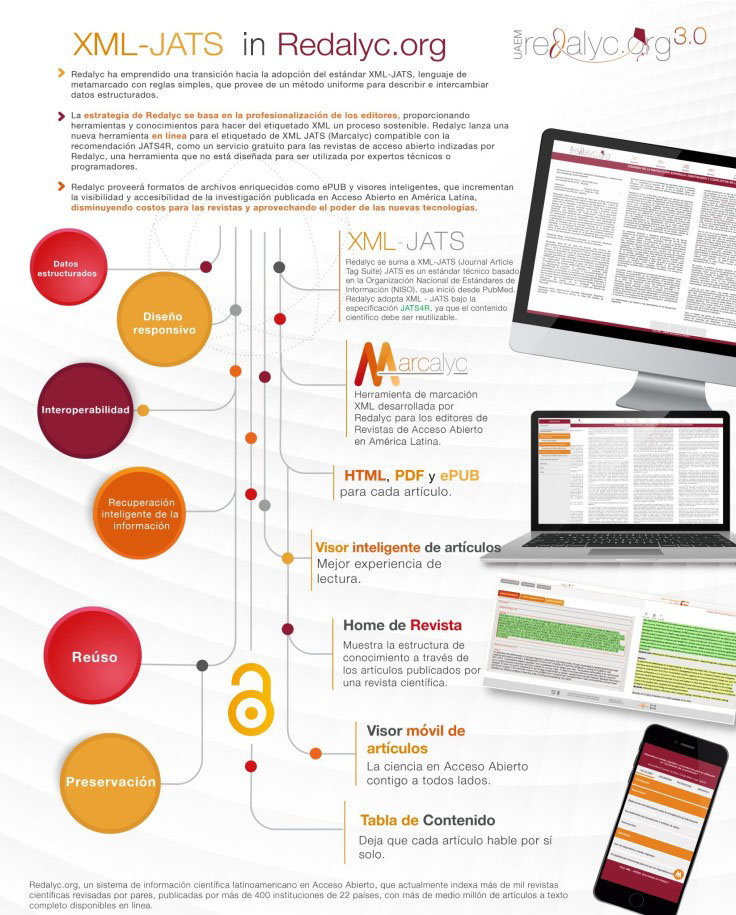Redalyc has started a transition and it has joined the XML JATS standard, under the JATS4R specification, a meta-tagging language with simple rules, that provides a uniform method to describe and exchange structured data. This transition will be gradual and flexible.
Redalyc joins XML JATS4R (JATS for Reuse). For Redalyc the reuse of XML JATS files is essential, both as input, for taking advantage of the XML JATS that the journal already has, and to share with other platforms those that will be generated with the Redalyc’s Marcalyc system. In regard of journals that have articles tagged with XML, derived from the indexing of platforms such as PubMed or Scielo, could be reused after being in a validation process, which can be done in the following link:
- In cases where journals do not have their material in XML format, Redalyc will make available, without charge, a technological tool for its generation, as well as training and continuous advice on the tagging process.
- On August 4, Redalyc will start to give an XML JATS certification course consisting of 4 modules, so that editors know the advantages of this tagging system, every phase of its development, the tagging modules with the available tools in Latin America (Annotum, Scielo and Marcalyc) and how to tag a text in XML JATS. Finishing this course, the participants that request it can receive an access code so that they can use Marcalyc in the terms that will be mentioned during the sessions. In the following link you can register on the course that is mentioned:
- The XML JATS certification course has four sessions which will be held in the following dates: August Thursday 4, Thursday 10, Thursday 18 and Thursday 25, 2016, 11 O’clock CDT. The last date for registering will be August 2. Participants that attend the four sessions will receive the correspondent certificate.
Some benefits of the XML JATS standard should be pointed out:
- It gives each article on the web more visibility.
- It allows the indexing and recovery of the full text of a document.
- It provides the automatic generation of different output formats ((HTML, PDF, ePUB).
- It makes available the printout with the journal’s format.
- It guarantees digital preservation.
- It makes possible the exploitation of viewers and multiplatform readers.
- It allows to regain control of the process and the editorial products.


Leave a Reply